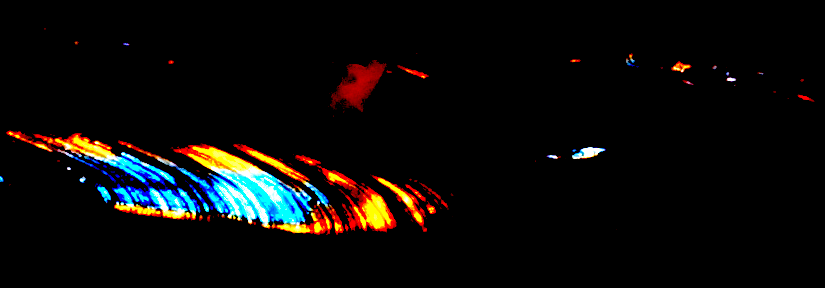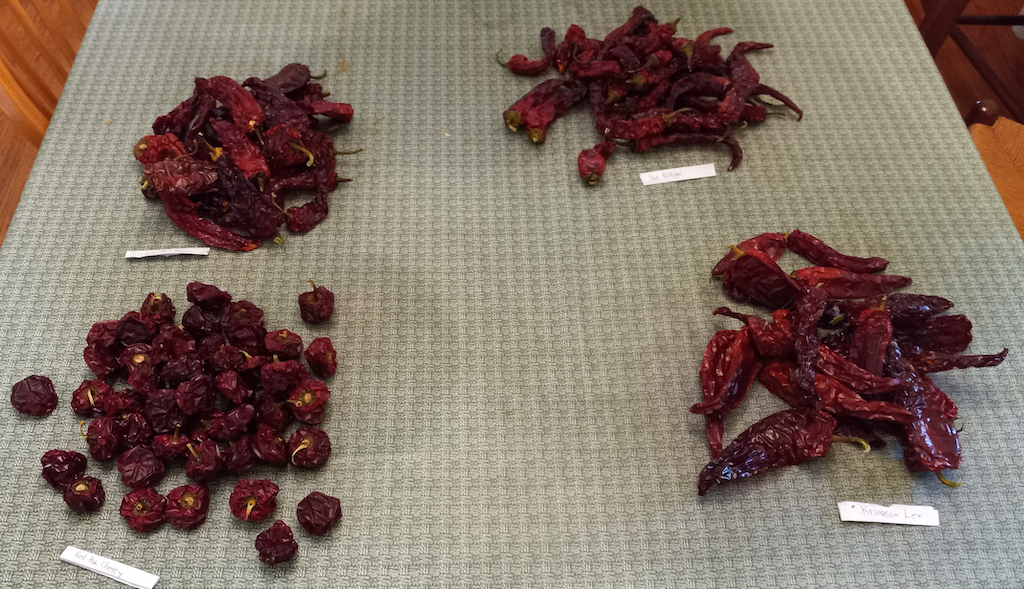Last Winterfest, my main Christmas present was an Instant Pot, collectively given by The Rellies. For my part, I got everybody a safety vest and a handy microplane grater (we had arranged this transaction months previously, as I am hard to buy for and hate shopping). A few days later, I remembered, barely in time, an impending Space 2.0 rocket landing. With amazing luck, I activated the live SpaceX feed a handful of seconds before the landing burn. I was so elated to have not missed it that I posted about my coincidence-joy to my historic mailing list. The succeeding conversation turned, with internal logic, into a discussion of the Mexican stew pozole, and how I have been making my chicken stock. Now that I actually have an Instant Pot, perhaps I should switch over to that as my stock pot. Thus, the following side-by-side comparison:
Here I compare two batches of chicken stock, one made according to my original procedure (OP), the other employing the Instant Pot (IP) instead.
I obtained two cold rotisserie chickens from the local supermarket, refrigerating them immediately after getting them home. The next day, I weighed each chicken, picked and weighed its meat, then froze the carcasses.
Some time later I prepared equal quantities of onions (quartered), carrots (halved lengthwise and cut into lengths), and celery (prepared as were the carrots).
OP chicken stock was made by placing one frozen carcass in a 5 qt pot, just covering it with water, then adding the remaining ingredients once a steady low boil was obtained. Once the steady low boil resumed after ingredient addition, cooking proceeded for three hours. IP chicken stock was made by placing one frozen carcass in a 6 qt Instant Pot, just covering with water, adding the remaining ingredients, pressure cooking for 1 hr, and releasing pressure after 20 min. For each preparation, the cooked material was filtered through a coarse kitchen sieve, boiled down to a final volume of just under 1 c, then brought to a final volume of 1 c with hot water. The reduced stock was then poured into a pyrex container, allowed to cool to near room temperature, and refrigerated overnight. Fat and scum were scraped off of the cooled stock, and it was remelted. The lower volume batch was brought to the same volume as the higher. Each batch was then poured back into a clean Pyrex storage container, allowed to cool and refrigerated.
The IP stock was darker in color, suggesting increased extraction of soluble components versus the OP stock. It was also much stiffer, as indicated by much lower jiggle when given a gentle shake, suggesting a higher gelatin concentration, consistent with increased extraction of soluble components. It was much more sensuous to carve off bits of it for ad hoc dishes or my usual fare.
Rather than continue with further experiments – making double batches of my usual fare and having blind taste tests and what not, I have simply adopted IP as my chicken stock method of choice. I did a similar experiment with pork butt (the pig is an animal whose shoulder is also its butt), but my local megamart carries butt only in about 10 lb bone-in pieces, which needs further annoying butchering in order to fit half of it into an Instant Pot, so for now I am sticking with a simple braise of the whole butt in a big pot and boiling down and skimming the drippings.








